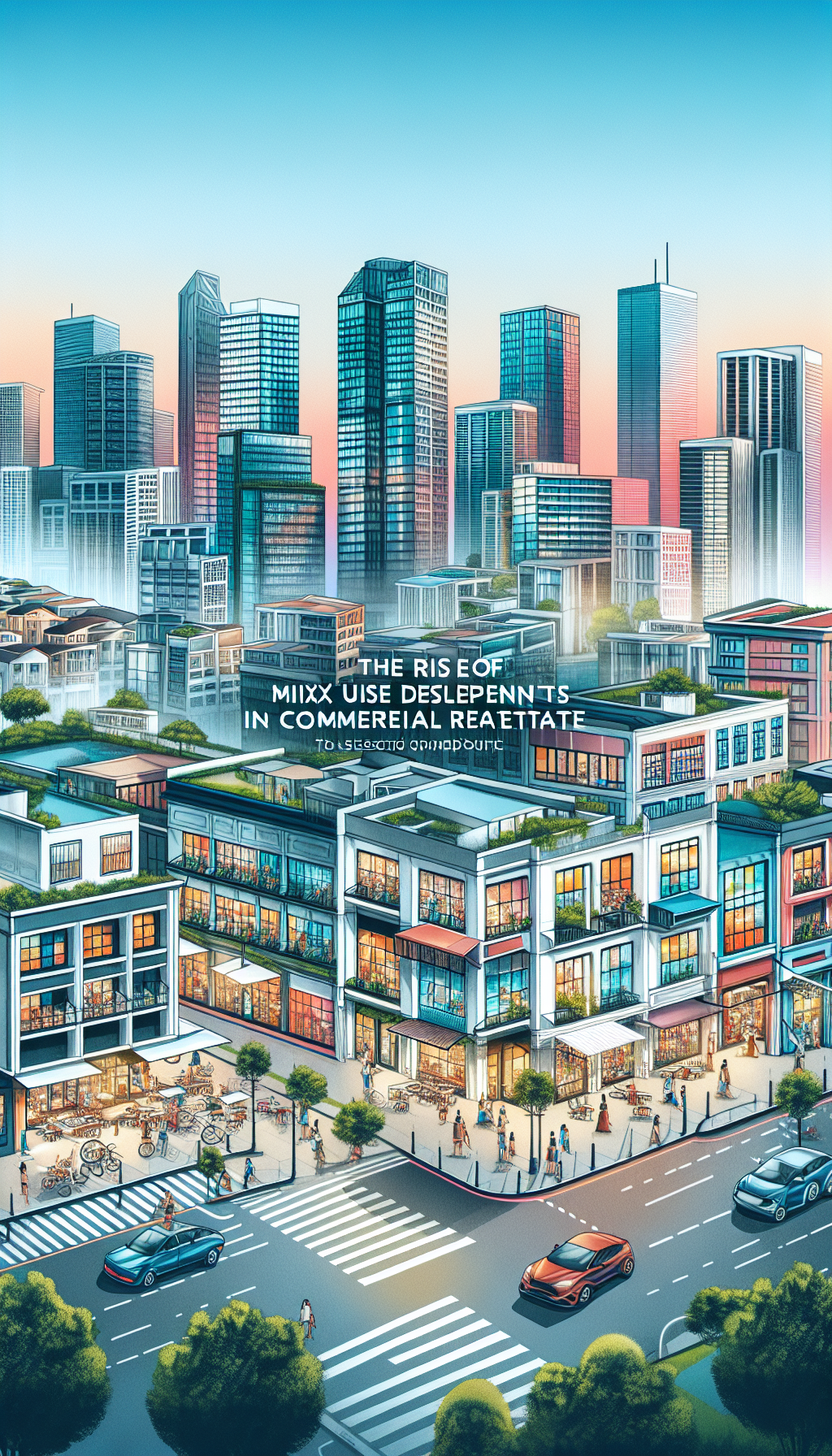The Rise of Mixed-Use Developments in Commercial Real Estate
Understanding Mixed-Use Developments
Mixed-use developments (MUDs) are integrated spaces that combine residential, commercial, cultural, institutional, or entertainment uses. These spaces encourage diversity by blending various functionalities into one cohesive environment. By creating a synergy between different aspects of urban life, MUDs aim to meet the needs of modern city-dwellers and businesses alike.
Historical Context
The concept isn’t new; mixed-use development has historical roots dating back to ancient civilizations where residential and commercial spaces coexisted. However, the industrial revolution and suburbanization led to the segmented model observed in much of the 20th century. Recently, urban planners and developers have revisited this model, spurred by a renewed focus on sustainable living and community-centric urban experiences.
Economic Drivers of MUDs
-
Urbanization: With over half of the world’s population now living in urban areas, cities are under immense pressure to accommodate this growth sustainably. MUDs respond to this demand by using space efficiently and fostering walkable communities that reduce dependence on cars.
-
Shifts in Consumer Preferences: Today’s consumers favor convenience and experiences over traditional shopping. MUDs integrate retail, dining, and entertainment options within residential spaces, meeting this demand for simplicity. The desire for cohesive living experiences encourages the proliferation of this model.
-
Telecommuting Influence: The rise of remote working has highlighted the need for multifunctional spaces. Developers are designing MUDs with flexible workspaces, co-working environments, and leisure facilities, making them attractive to both residents and businesses.
-
Sustainability Initiatives: As society focuses on environmental impact, MUDs are emerging as eco-friendly solutions. By promoting public transport, walkability, and community living, these developments often incorporate green elements like parks and sustainable architecture.
Benefits of Mixed-Use Developments
-
Enhanced Livability: Residents of mixed-use communities typically enjoy easy access to essential services, reducing the need for lengthy commutes. This proximity enhances quality of life and fosters a sense of belonging.
-
Economic Vitality: MUDs can stimulate local economies by attracting a diverse range of businesses. The presence of residential units nearby can ensure that retail establishments have a steady customer base, contributing to economic resilience.
-
Cultural Integration: MUDs serve as a habitat for cultural interactions. Integrating spaces for art, entertainment, and community events fosters a thriving cultural scene, encouraging social interactions that blend different demographics.
-
Innovation Hubs: These developments are often located in urban centers, making them conducive to creativity and collaboration. The mix of residential and commercial environments can result in vibrant ecosystems for startups and established companies alike.
Design Considerations in MUDs
-
Zoning Regulations: Successful mixed-use developments often navigate complex zoning regulations, ensuring compliance while making a compelling case for varied use. This requires creative architectural designs that combine aesthetics and functionality.
-
Transportation Planning: Accessibility is vital. MUDs must be designed with transportation in mind, incorporating bike lanes, pedestrian pathways, and proximity to public transportation. Smart transportation solutions are increasingly essential to minimize traffic congestion.
-
Architectural Diversity: High-quality designs are crucial for these spaces to remain attractive and foster community identity. Architects are focusing on creating flexible and inviting environments that can adapt to future needs or changes in residential and commercial trends.
-
Public Spaces: Incorporating public spaces such as parks, plazas, or open markets can enhance community interaction. These areas serve as social hubs, inviting residents to engage and connect with their neighbors.
Challenges Facing Mixed-Use Developments
-
Financial Feasibility: While MUDs can be economically beneficial in the long run, the initial investment can deter developers. The complexities of financing commercially combined with residential spaces require innovative funding solutions.
-
Stakeholder Collaboration: Successfully creating an MUD often means balancing the desires and needs of various stakeholders, including residents, business owners, and city officials. Consensus-building can be time-consuming and challenging.
-
Cultural Resistance: In some regions, there may be apprehension toward mixed-use developments due to cultural preferences for single-use zoning. Overcoming this resistance often requires extensive community engagement and education.
-
Market Saturation: As MUDs gain popularity, there is a risk of oversaturation in certain areas, potentially leading to local market decline. Continuous market research and adaptive strategies are necessary to meet demand without redundancy.
The Future of Mixed-Use Developments
As urban trends evolve, mixed-use developments are poised for further growth. Innovations in technology are transforming how these spaces function, promoting concepts like smart city initiatives and sustainable practices. As more developers recognize the benefits of creating integrated spaces, the landscape of commercial real estate will likely reflect a significant shift toward MUDs.
Case Studies in Mixed-Use Development
-
Hudson Yards, New York City: A flagship project displaying the potential of mixed-use developments, Hudson Yards combines upscale retail, residential units, and cultural spaces. It epitomizes urban integration in a coveted area, capitalizing on New York’s dense urban fabric.
-
The Wharf, Washington D.C.: This riverfront development incorporates residential towers alongside retail and marine activities. Its design reflects a commitment to connectivity and environmental sustainability, fostering public interaction and community space.
-
Southbank, Melbourne: Mixed-use projects like Southbank meld residential with cultural sites, parks, and commercial areas. This development is celebrated for its vibrant community lifestyle and artistic elements, epitomizing the potential to create an enriching urban environment.
Conclusion of Mixed-Use Developments’ Explosive Growth
In today’s fast-paced world, the rise of mixed-use developments in commercial real estate aligns with evolving urban lifestyles. By fostering community engagement, economic vitality, and environmental sustainability, these developments are transforming urban landscapes. In this journey toward a more integrated and holistic urban experience, the future of MUDs looks bright and promising.

